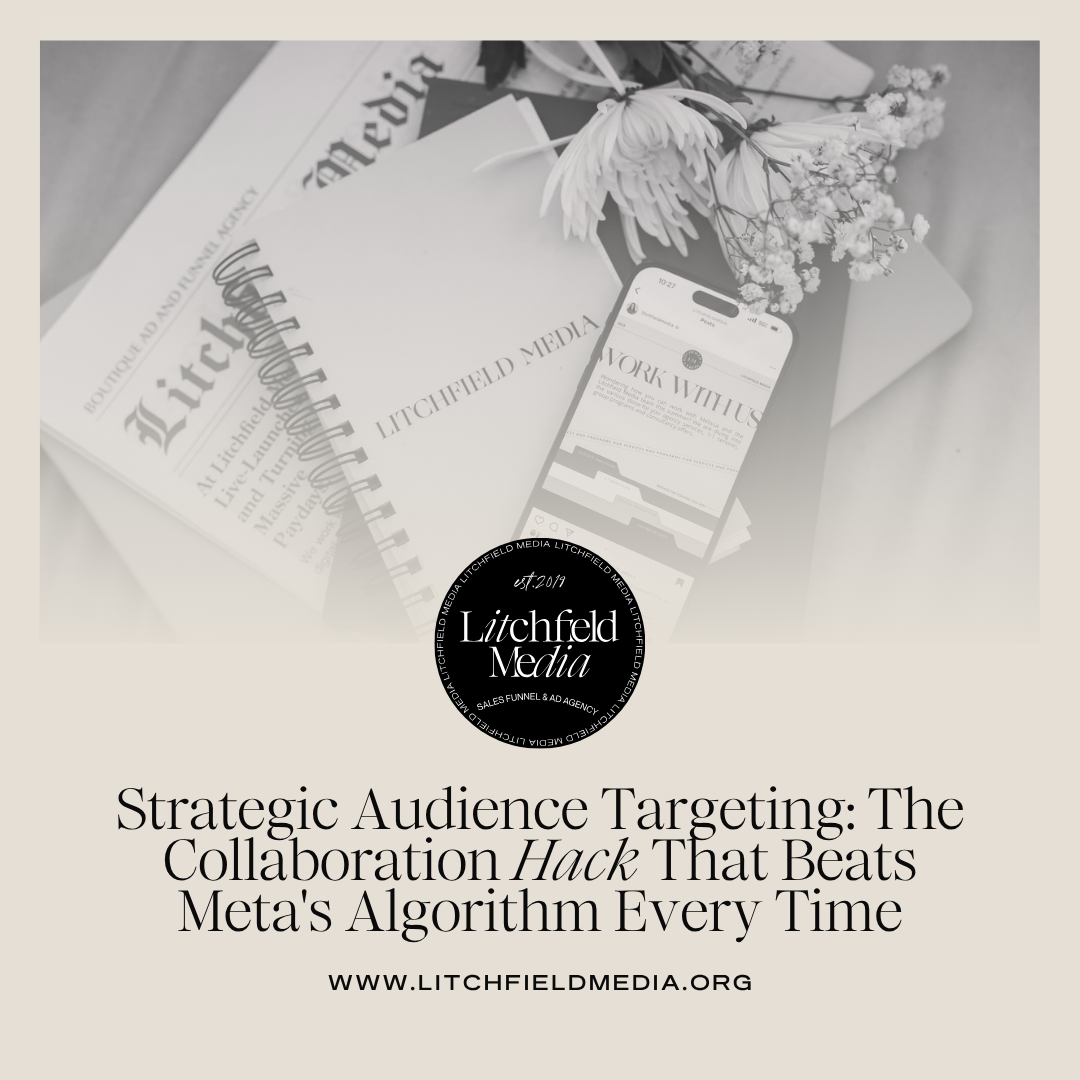I had a client come to me last week with the most frustrating strategic audience targeting problem. She knew exactly who her dream customers were—they all listened to this specific podcast—but when we went into Meta’s targeting options? Nowhere to be found.
This happens more than you think. Your perfect audience hangs out somewhere super specific (a particular podcast, a niche Facebook group, follows a certain micro-influencer), but Meta’s targeting just… doesn’t have it. Meanwhile, you’re stuck trying to piece together demographics and interests that might, maybe, possibly reach the right people.
My client was ready to throw money at broad targeting and hope for the best. But I stopped her.
Skip the Middleman Entirely
Instead of trying to force Meta to find these people, I asked her: “What if we skip the middleman entirely?”
Here’s what we came up with for better strategic audience targeting: Instead of trying to target that podcast’s audience through ads, she’s going to pitch herself as a guest. Then when that episode goes live, the host will likely share it on social—and tag her as a collaborator.
Boom. Now she’s directly in front of that exact audience, with the host’s endorsement, and she can retarget everyone who engages with that post.
Think about it—when you see an ad, you know it’s an ad. But when someone you already trust introduces you to their guest? That’s a warm introduction with built-in credibility.
Plus, podcast listeners are already engaged. They’re not mindlessly scrolling; they chose to spend 30+ minutes listening. That’s a quality audience you can’t buy.
Audience Hacking Strategies That Actually Work
These strategic audience targeting methods go beyond traditional ad platforms:
- Live collaborations: Instagram Live or Facebook Live with your target influencer/creator
- Guest content swaps: Write for each other’s email lists or blogs
- Joint challenges or workshops: Split the audience, both of you win
- Strategic tagging: Get featured in their content where they can tag your business
- Community partnerships: Instead of targeting “yoga enthusiasts,” partner with an actual yoga studio
Why Collaborations Beat Complex Targeting
This isn’t just about getting around targeting limitations. It’s about building relationships that compound over time. That podcast guest spot? It’s not just one post—it’s a permanent piece of content that continues working for you.
Your ads might get people to your page, but these collaborations get you recommended by people they already trust. There’s a massive difference.
I’ve seen clients spend thousands trying to find their audience through complex strategic audience targeting, only to get better results from one solid collaboration. The targeting was expensive and hit-or-miss. The collaboration? Free, targeted, and came with social proof.
Your Action Plan for Better Targeting
- Identify where your audience actually hangs out (not where Meta thinks they do)
- Research collaboration opportunities with those platforms/people
- Pitch value-first—what can you offer them, not what you want from them
- Set up retargeting for anyone who engages with the collaborative content
- Build the relationship for future opportunities
The Bottom Line
Sometimes the best strategic audience targeting strategy is no targeting at all. Sometimes it’s just being human and building relationships.
Your dream customers are already gathered somewhere, you just need to get invited to the party.
Whether you’re doing collaborations or running traditional ads, you need a strategy that actually works in 2025. Most people are still running campaigns like it’s 2019, wondering why their results keep getting worse.Ready to master both organic collaboration strategies AND high-converting paid traffic? Ad Traffic School teaches you the foundation-first approach that works no matter what Meta throws at you. Learn how to build sustainable growth strategies that don’t depend on perfect targeting, because sometimes the best audience finds you through trust, not algorithms. Join Ad Traffic School today.

